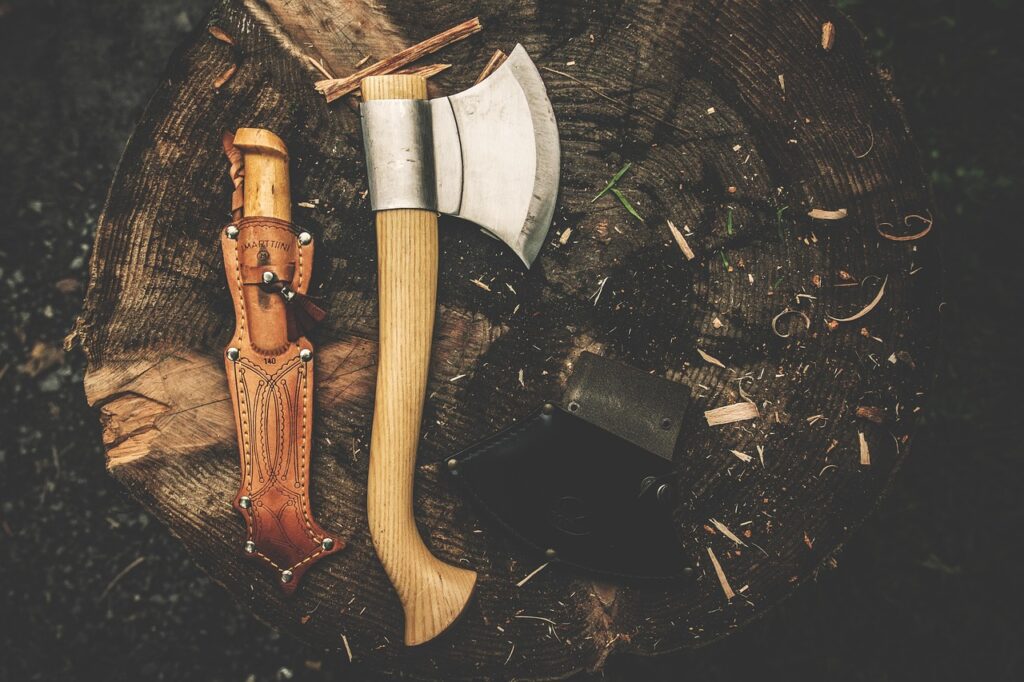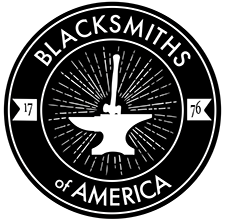The Art of Bladesmithing
Crafting Edges with Precision
What is Bladesmithing & How Does it Differ from Blacksmithing?
Bladesmithing is the art and craft of forging and shaping metal into blades, such as knives, swords, and other edged tools. While it shares some techniques with blacksmithing—namely, the use of heat, hammers, and anvils to shape metal—bladesmithing is a more specialized practice that focuses on creating sharp, durable, and often intricately designed cutting tools. The process involves not only forging but also precise heat-treating, grinding, and finishing to achieve a blade’s desired strength, sharpness, and aesthetic.
Blacksmithing, by contrast, is a broader craft that encompasses forging a wide range of iron or steel items, from architectural elements like gates to functional tools like fireplace pokers or coat racks. While blacksmiths may forge basic blades, bladesmiths dedicate their expertise to the nuanced science of blade-making, mastering techniques like differential heat treatment and edge geometry to ensure performance and longevity.
What Types of Items Do Bladesmiths Make?
- Knives: From kitchen chef’s knives to hunting and survival knives, bladesmiths craft blades that balance sharpness, durability, and ergonomics. Custom handles made from wood, bone, or micarta add a personal touch.
- Swords: Historical replicas, fantasy-inspired designs, or ceremonial swords showcase a bladesmith’s ability to combine form and function, often with intricate engravings or fittings.
- Axes and Hatchets: Forged for chopping, camping, or throwing, these tools are both practical and beautifully crafted.
- Daggers and Dirks: Smaller, double-edged blades designed for precision or historical authenticity.
- Specialty Tools: Bladesmiths may create unique items like letter openers, shaving razors, or agricultural tools, blending utility with artistry.

Choosing the Right Bladesmith
Commissioning a custom blade is an exciting process, but selecting the right bladesmith is crucial to ensuring quality and satisfaction. Here’s what to consider when choosing a bladesmith:
- Qualifications and Training: Look for a bladesmith with formal training, apprenticeships, or certifications, such as those from the American Bladesmith Society (ABS). Experience in forging and heat-treating high-carbon or Damascus steel is essential.
- Portfolio: Review the bladesmith’s portfolio to evaluate their craftsmanship and style. Look for examples of knives, swords, or other blades similar to what you want. A strong portfolio shows consistency, attention to detail, and versatility.
- Specialization: Some bladesmiths focus on specific items, like kitchen knives or historical swords. Ensure their expertise aligns with your project.
- Materials and Techniques: Ask about the types of steel they use (e.g., 1095 carbon steel, Damascus) and their forging and heat-treating processes. A skilled bladesmith will explain how they achieve a balance of hardness and flexibility.
- Communication and Customization: A good bladesmith listens to your needs, offers design suggestions, and provides clear timelines and pricing. They should be open to collaborating on custom features, like handle materials or engravings.
- Reviews or References: Check for client testimonials or ask for references to confirm the bladesmith’s reliability and quality. Membership in organizations like those connected to blacksmithsofamerica.com can also indicate professionalism.
How Blacksmiths of America Can Help
Finding a skilled blacksmith can be challenging, especially if you’re unsure where to start. That’s where BlacksmithsOfAmerica.com comes in. We are a comprehensive directory designed to connect clients with blacksmiths across the United States, making it easy to find an artisan in your state who specializes in the ironwork you need.
Why Use BlacksmithsOfAmerica.com?
- State-Specific Search: The website organizes blacksmiths by state, allowing you to browse artisans in your area. Whether you’re in California, Texas, or New York, you’ll find local blacksmiths with the skills to create custom blades for your needs.
- Specialization Filters: BlacksmithsOfAmerica.com lets you filter by expertise, such as bladesmiths, ensuring you connect with artisans who excel in their chosen craft. This saves time compared to general searches or word-of-mouth referrals.
- Detailed Listings: Each blacksmith’s profile includes key information like services offered, contact details, and sometimes portfolios or client reviews, helping you evaluate their suitability for your project
